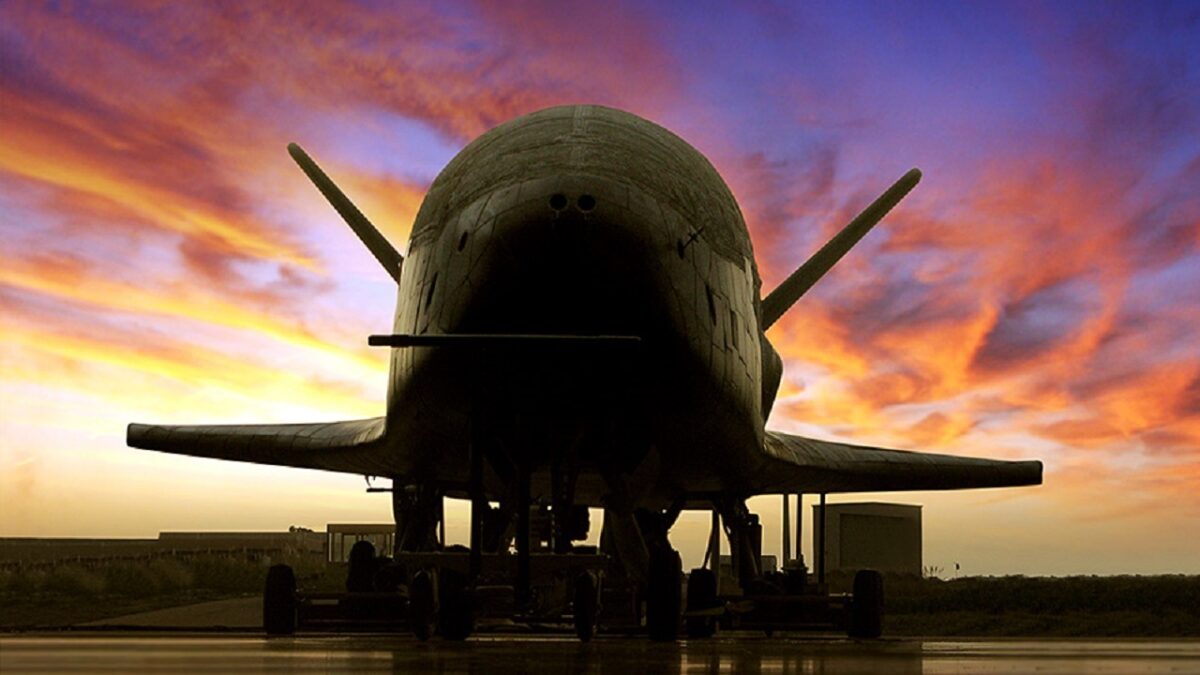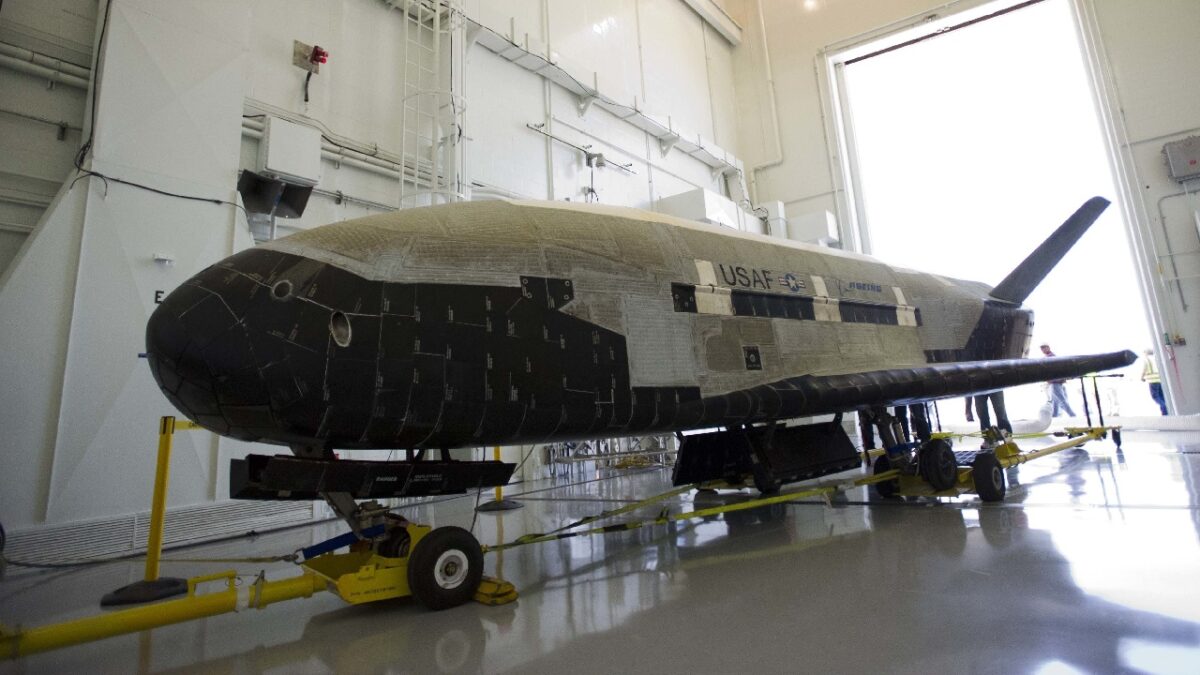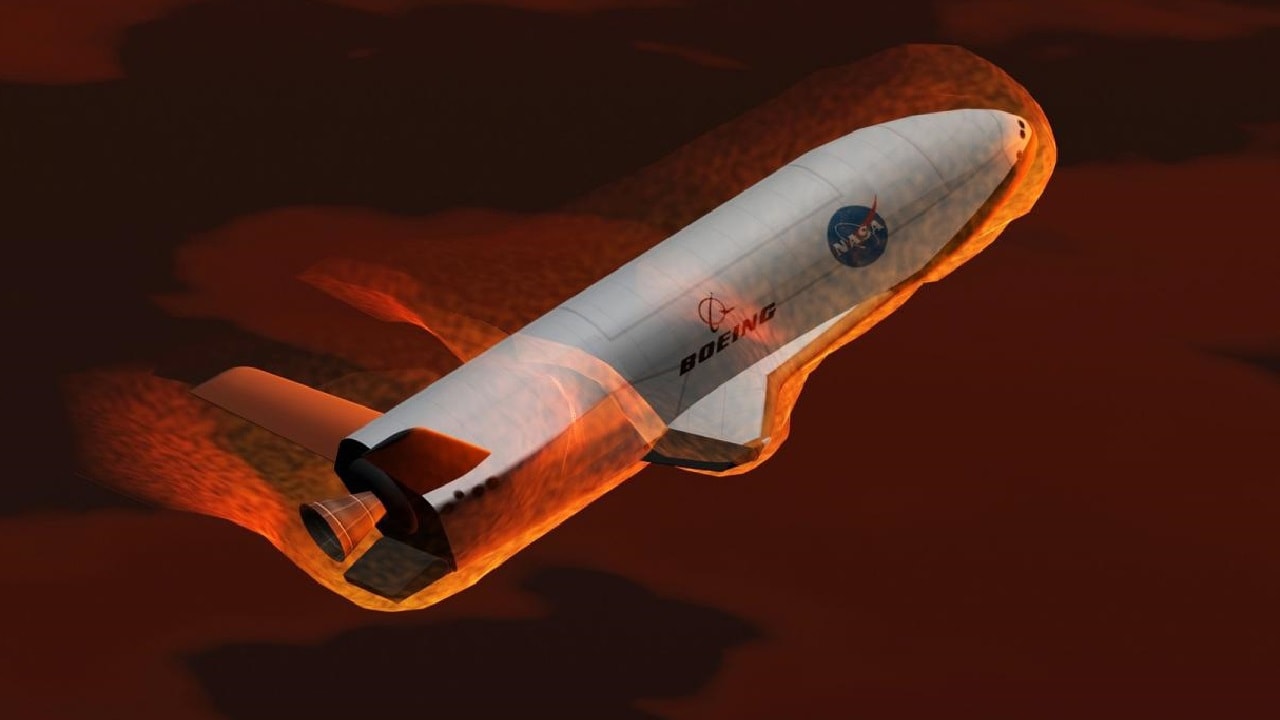An attack space drone may sound a bit like a vessel from Star Wars, but it might actually be possible in the real world, based on a space “drop” and the successful flight of Boeing’s X-37 robotic spacecraft.
It may not seem realistic for there to be an attack space drone anytime soon, yet such a platform has already been in development for many years and is in fact making progress.
It’s called the X-37B or the Orbital Test Vehicle, an unmanned space platform designed to enter space and then re-enter the atmosphere. The platform, now being developed by the US Space Force, demonstrated an ability to de-orbit and land at a NASA facility last year, according to an interesting essay published by US Space Force News.
Development of the platform actually goes back as far as 2006 as a NASA technology, and the unmanned space vehicle has actually spent 908 days in orbit during a mission from 2020 to 2022. The OTV is thrust into space by a launch vehicle before returning to land as a space vehicle when re-entering the atmosphere.
In more recent years, the platform has been more fully militarized as a technology which could potentially operate as a space drone. While many of its technologies may not be available for public consumption and also very much still in development, such a platform certainly introduces a wide range of significant tactical advantages. As a mobile platform, it seems clear the X-37B could move faster and cover wider areas faster and more efficiently than existing satellites, should it have sensors with sufficient range to detect ground and air threats. For example, overhead infrared warning satellites can detect the heat signature of an enemy missile launch to provide early warning. Should an unmanned system be capable of something similar, it could bring a wider, more continuous and mobile threat warning system beyond the earth’s atmosphere.
The largest advantages of such a vehicle might be discovered in the realm of networking and weapons. For instance, should a mobile space “node” be able to share time-sensitive data with satellites and therefore ground-based command and control, the response, attack and countermeasure cycle would be massively accelerated. Also, while it may seem like Star Wars, the idea of a weaponized space platform, if operated by humans functioning in a command and control capacity, could ensure the safety of satellites and potentially be capable of offensive operations.
The timing of an autonomous space platform could prove extremely impactful when it comes to networking with fast-emerging Medium and Low-Earth Orbit satellites is intended to increase throughput, build in redundancy, and better enable hypersonic missiles defenses to establish a continuous “track” of an enemy threat as it quickly transits from one radar aperture field of regard to another. A mobile spacecraft would of course immeasurably help this effort, particularly if it could use various kinds of datalinks, GPS signals, or even optical communication to send real-time information to human decision-makers exponentially faster.
An evolved X-37B could, for instance, potentially defend satellite assets from enemy ASAT or anti-satellite weapons. Also, if pursued in an ethical manner consistent with the Pentagon’s “human-in-the-loop” doctrine related to the use of lethal force, the X-37B could potentially destroy enemy satellites or targets from attack locations beyond the Earth’s atmosphere.
Such a prospect may seem alarming, and the U.S. has been reluctant to weaponize space, instead thinking of space as a multinational sanctuary.
However, Russian and Chinese efforts to militarize space put the U.S. at a significant deficit, creating a need for the Pentagon to close the gap, build a U.S. Space Force and prepare to defend the US from space if necessary moving into the future.

X-37B. Image Credit: Boeing.

The X-37B Orbital Test Vehicle (OTV), the Air Force’s unmanned, reusable space plane, landed at Vandenberg Air Force Base at 5:48 a.m. (PDT) June 16. OTV-2, which launched from Cape Canaveral Air Force Station, Fla., March 5, 2011, conducted on-orbit experiments for 469 days during its mission. The X-37B is the newest and most advanced re-entry spacecraft. Managed by the Air Force Rapid Capabilities Office, the X-37B program performs risk reduction, experimentation and concept of operations development for reusable space vehicle technologies. (photo credit: Boeing)

X-37B. Image Credit: NASA YouTube/Screenshot.
About the Author
Kris Osborn is the Military Affairs Editor of 19FortyFive and President of Warrior Maven – Center for Military Modernization. Osborn previously served at the Pentagon as a Highly Qualified Expert with the Office of the Assistant Secretary of the Army—Acquisition, Logistics & Technology. Osborn has also worked as an anchor and on-air military specialist at national TV networks. He has appeared as a guest military expert on Fox News, MSNBC, The Military Channel, and The History Channel. He also has a Masters Degree in Comparative Literature from Columbia University.

